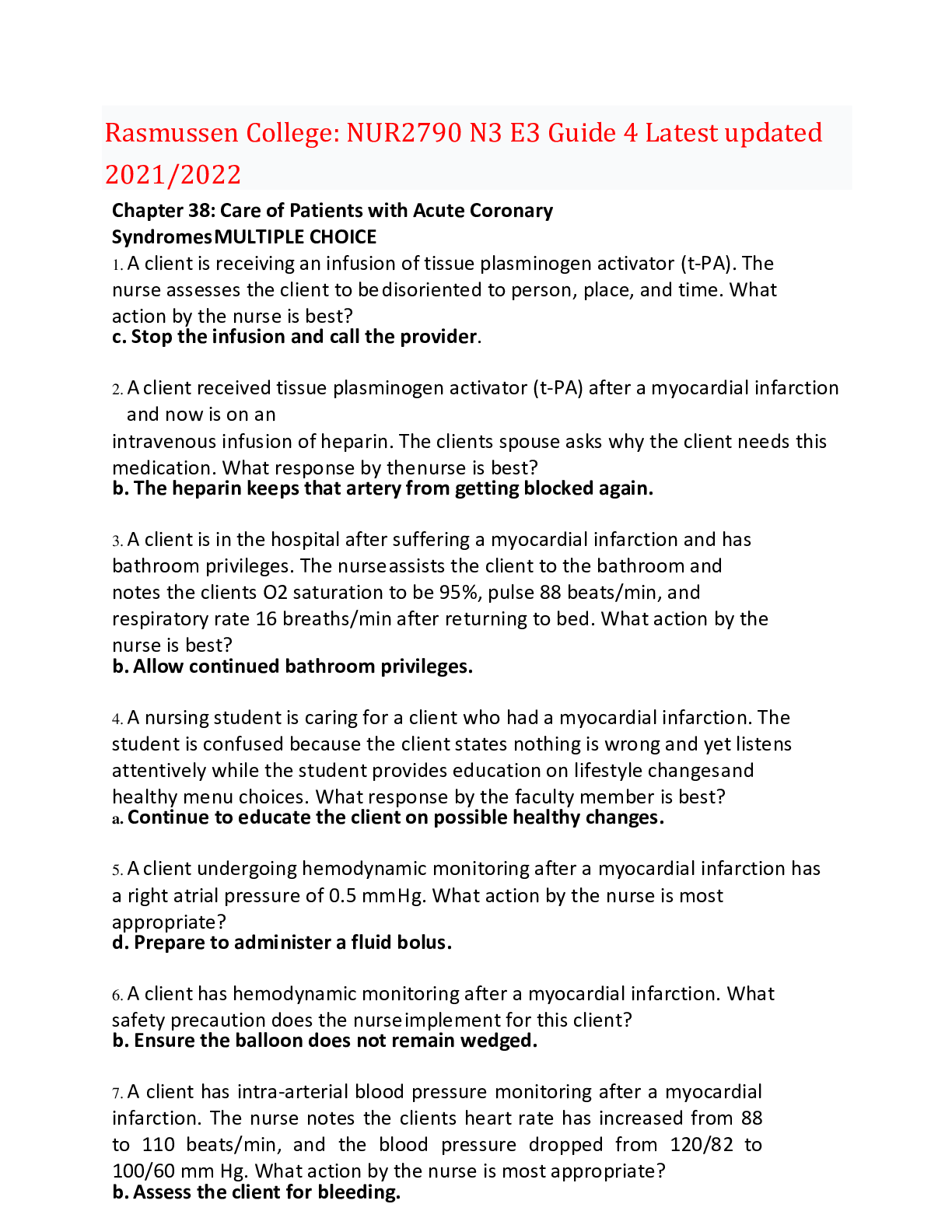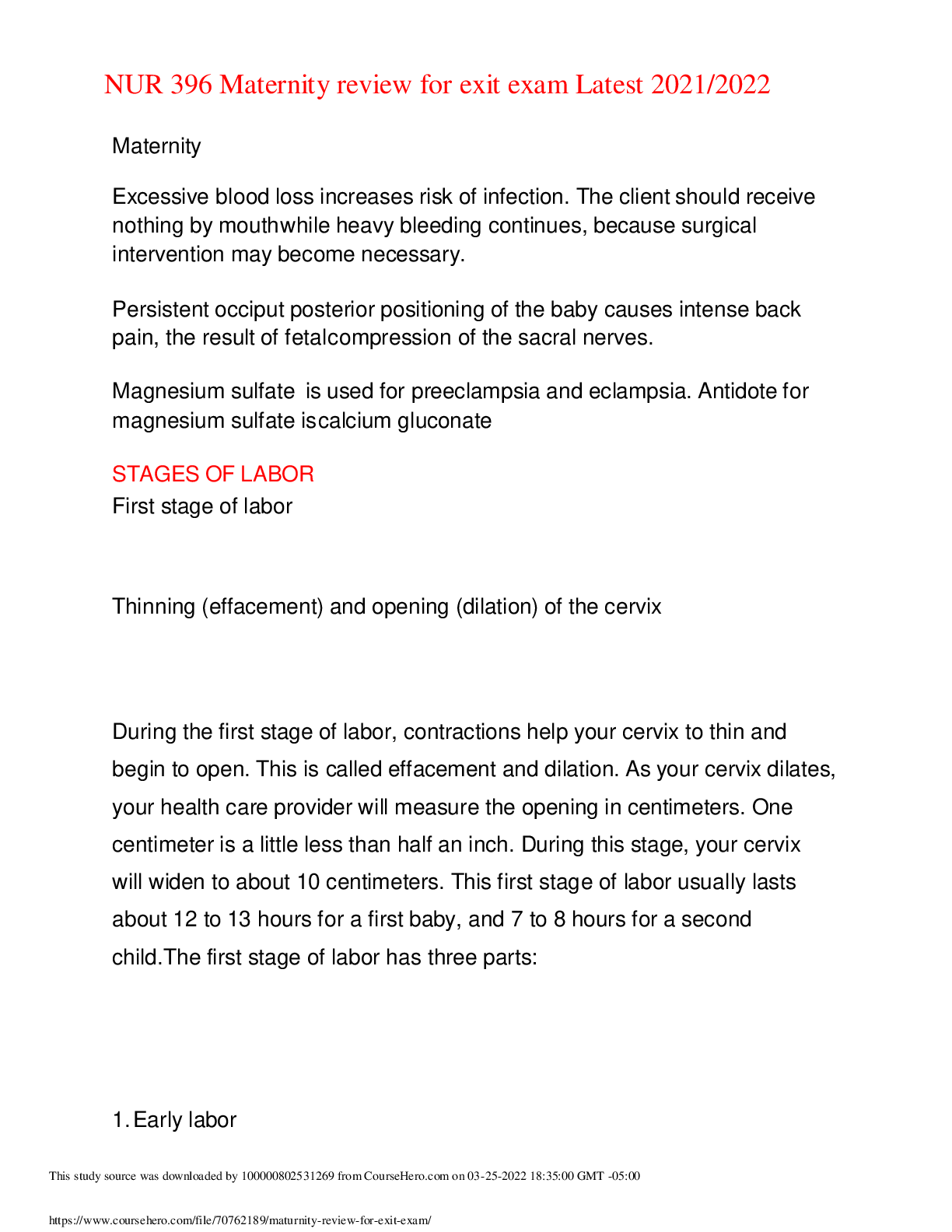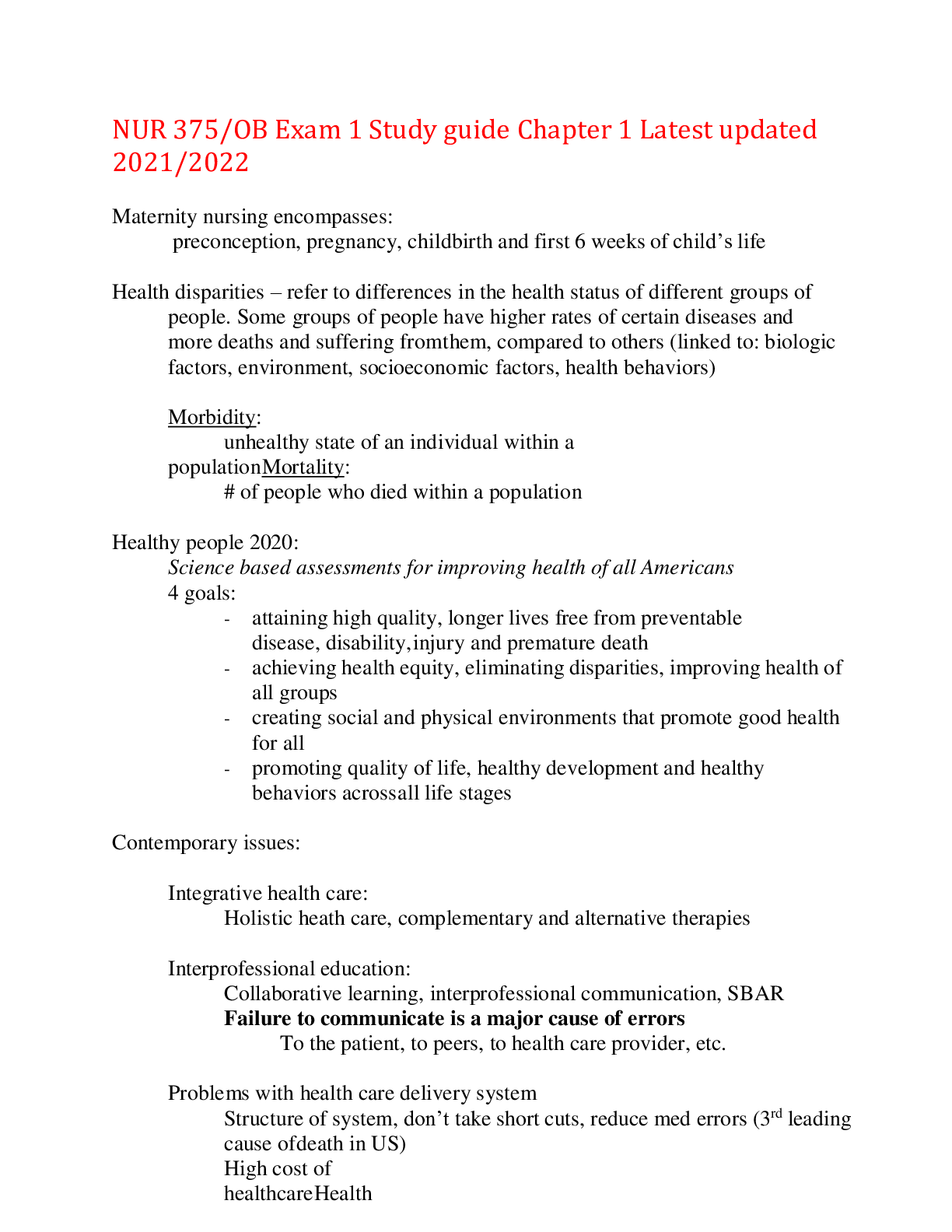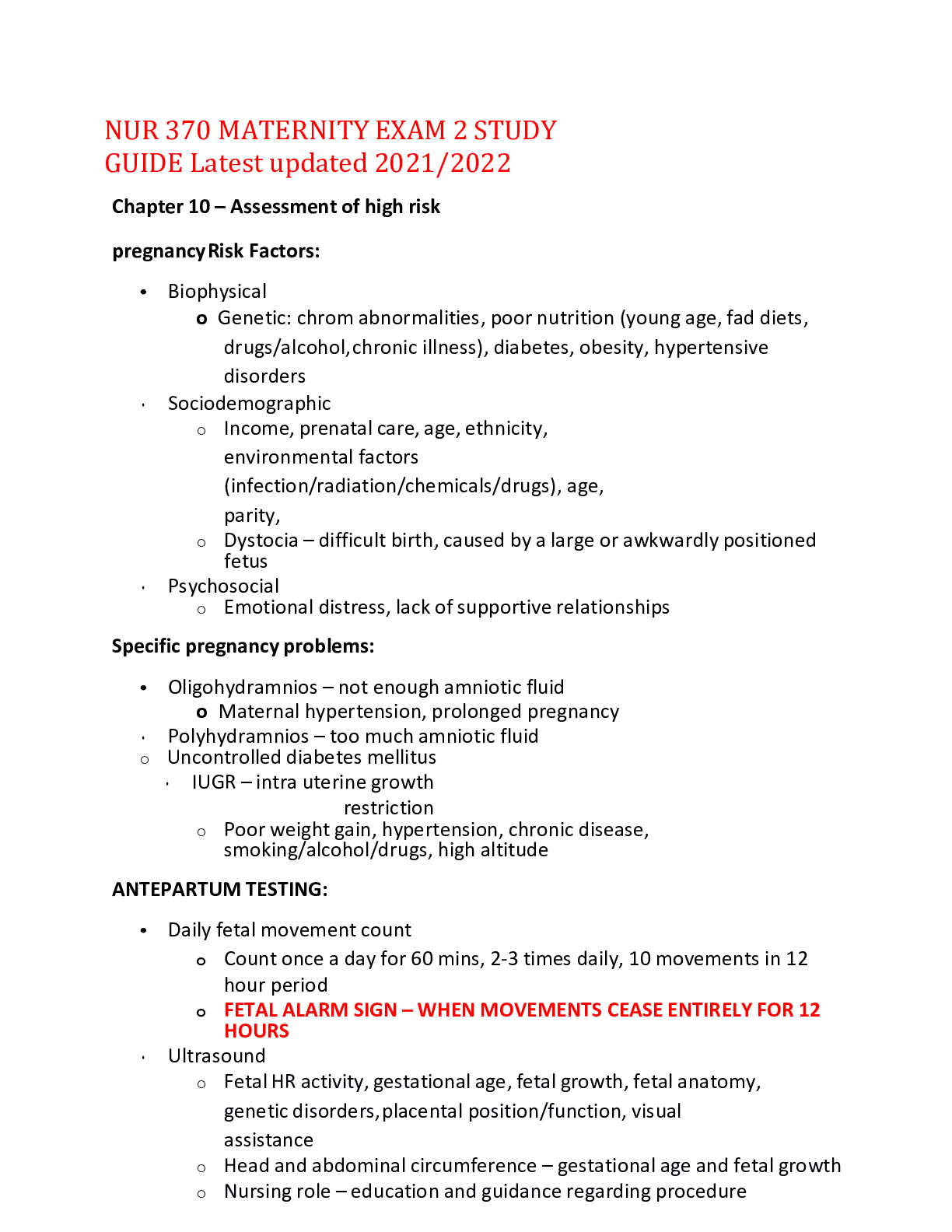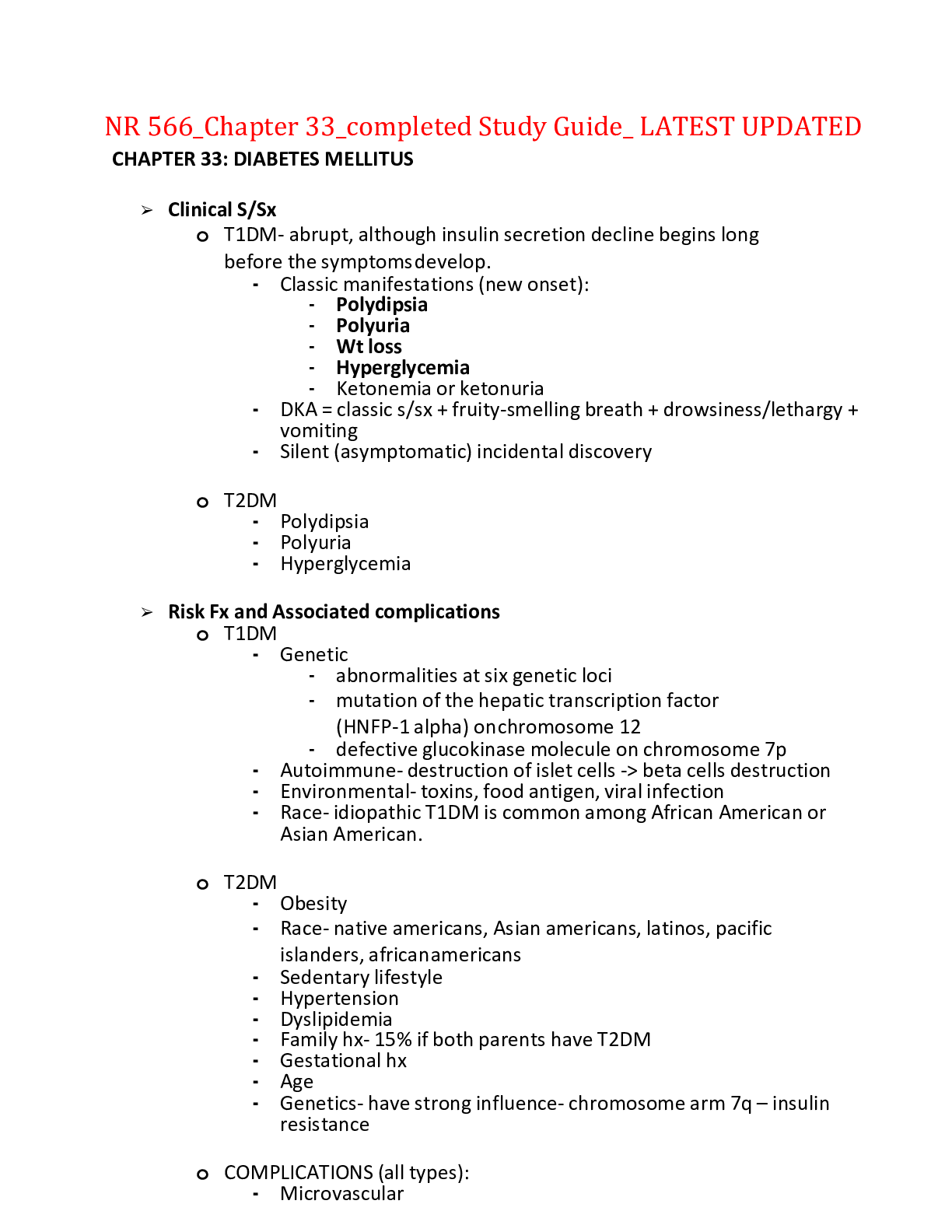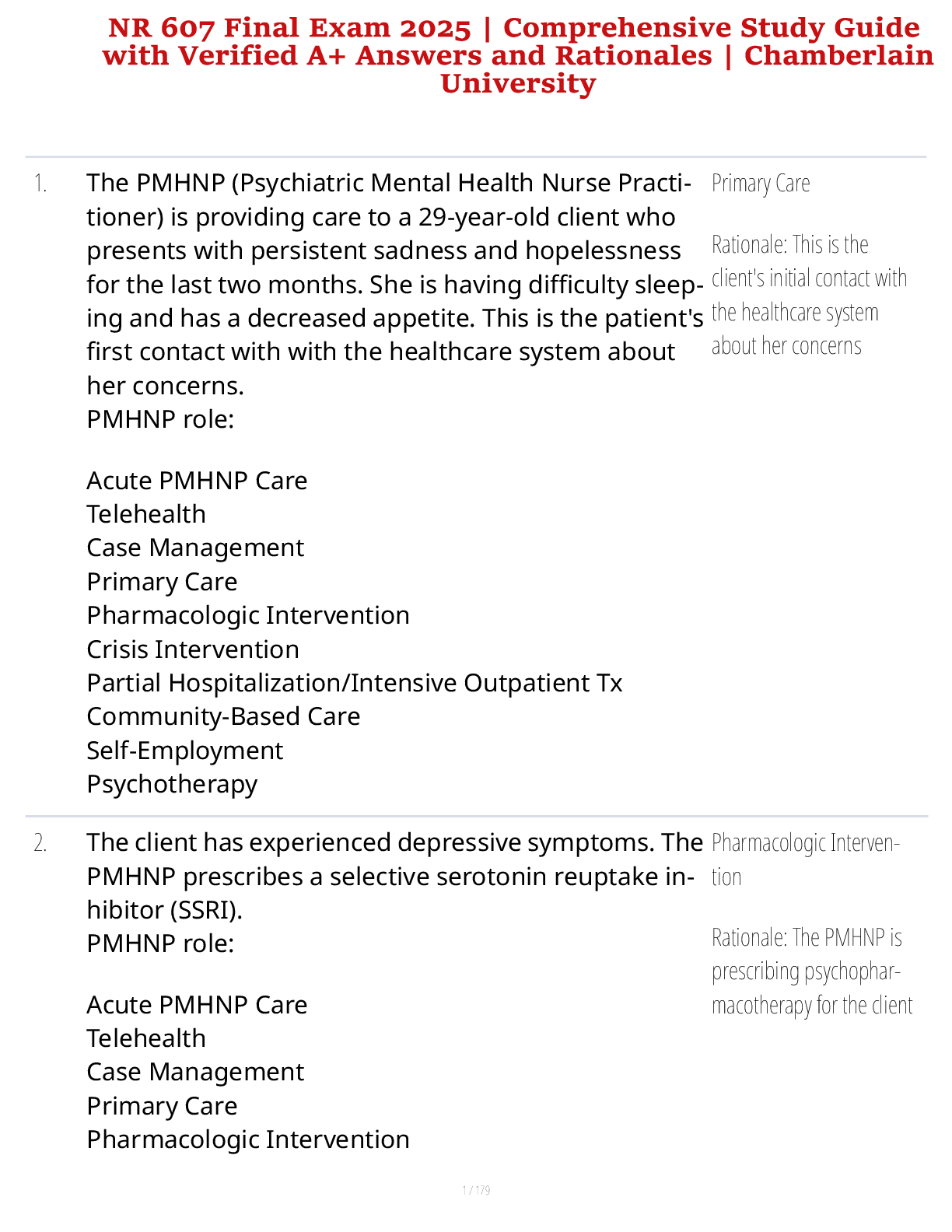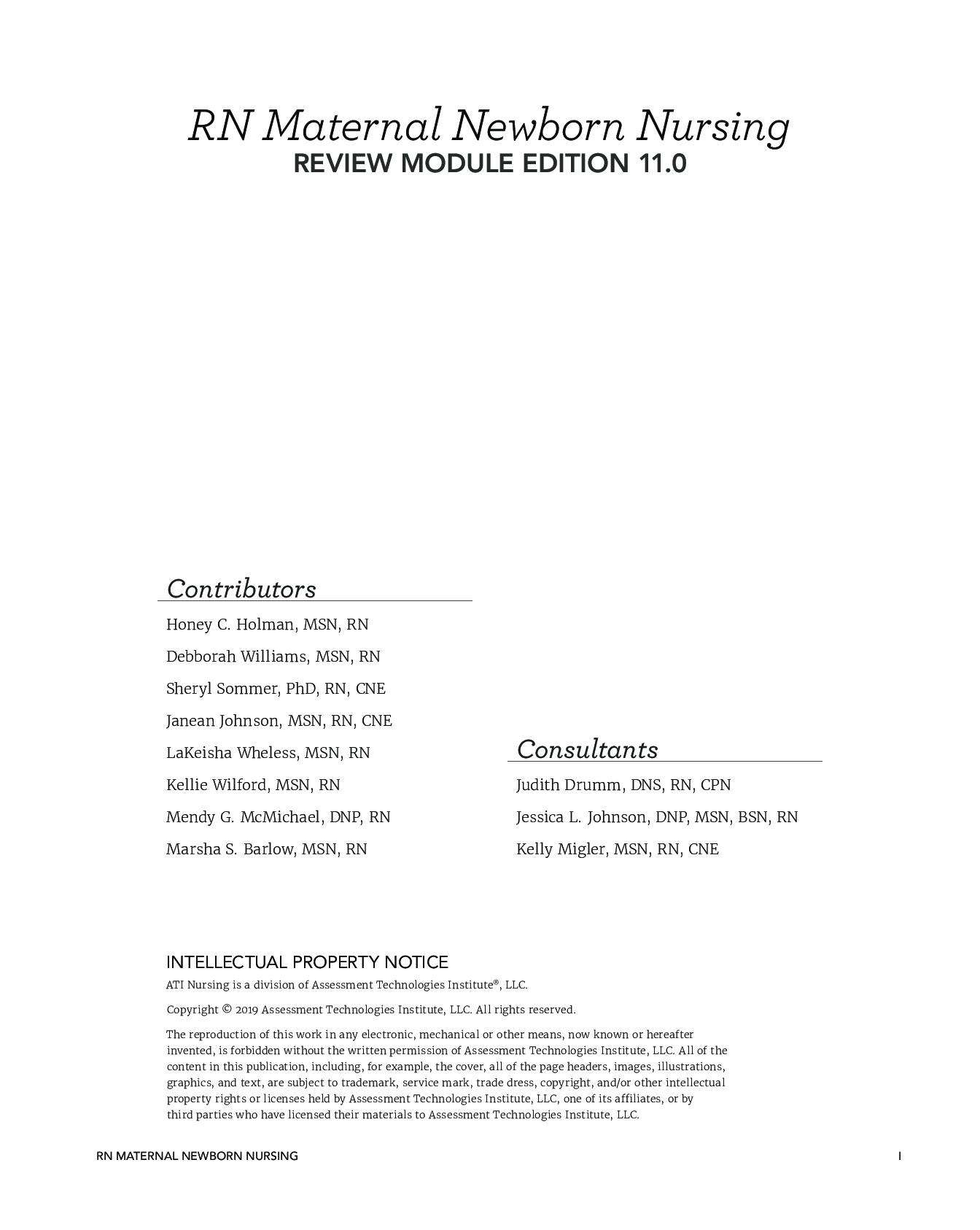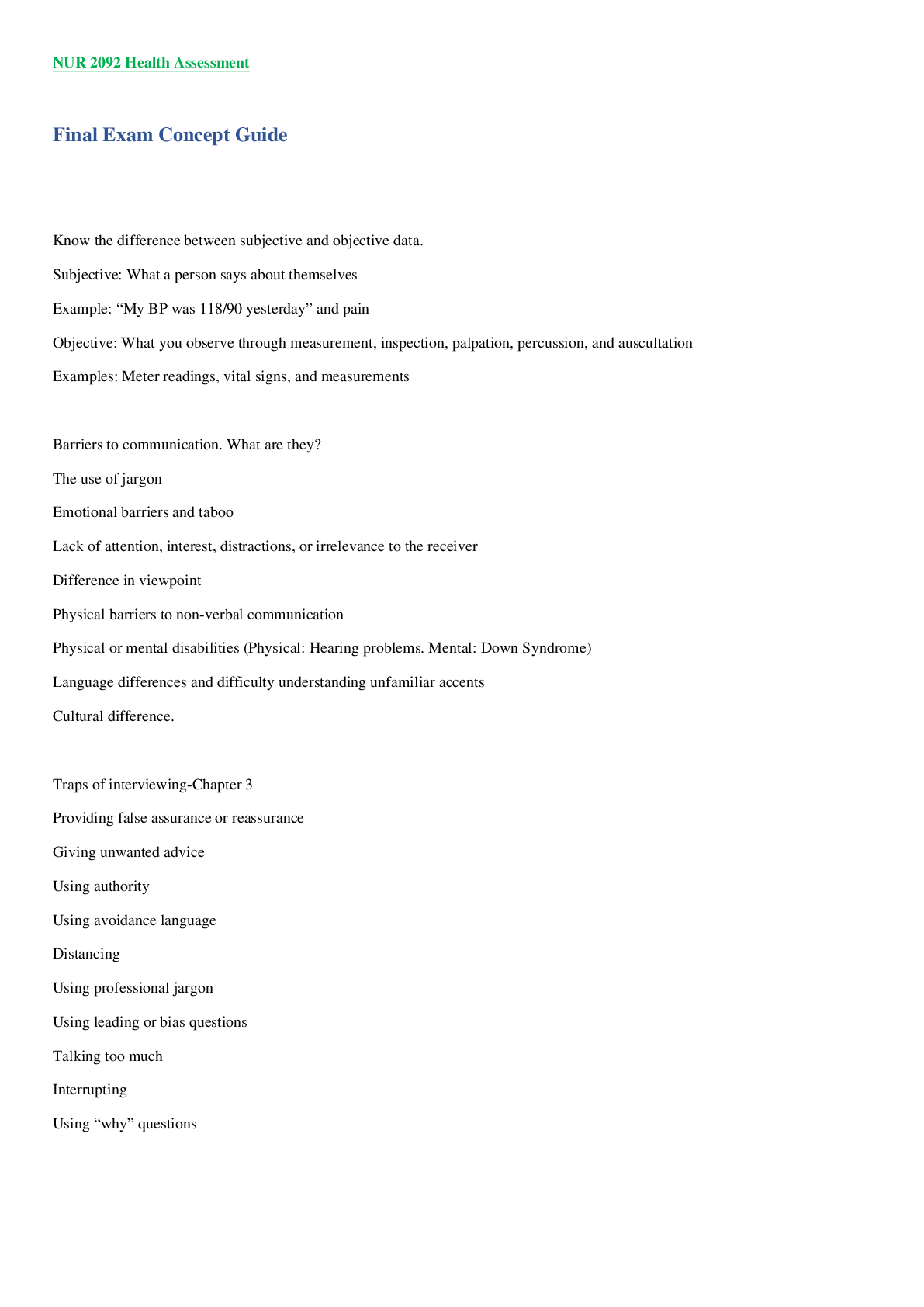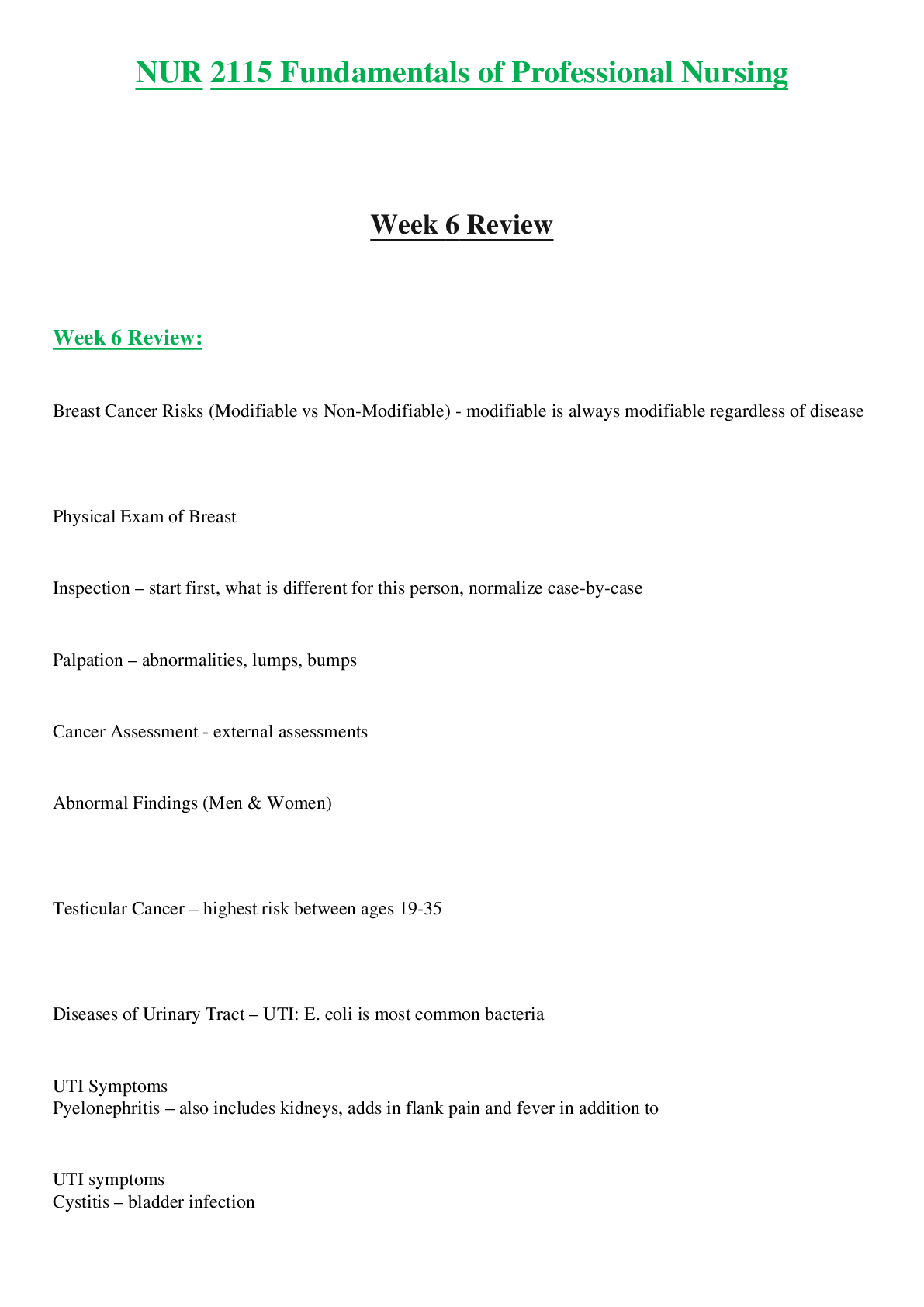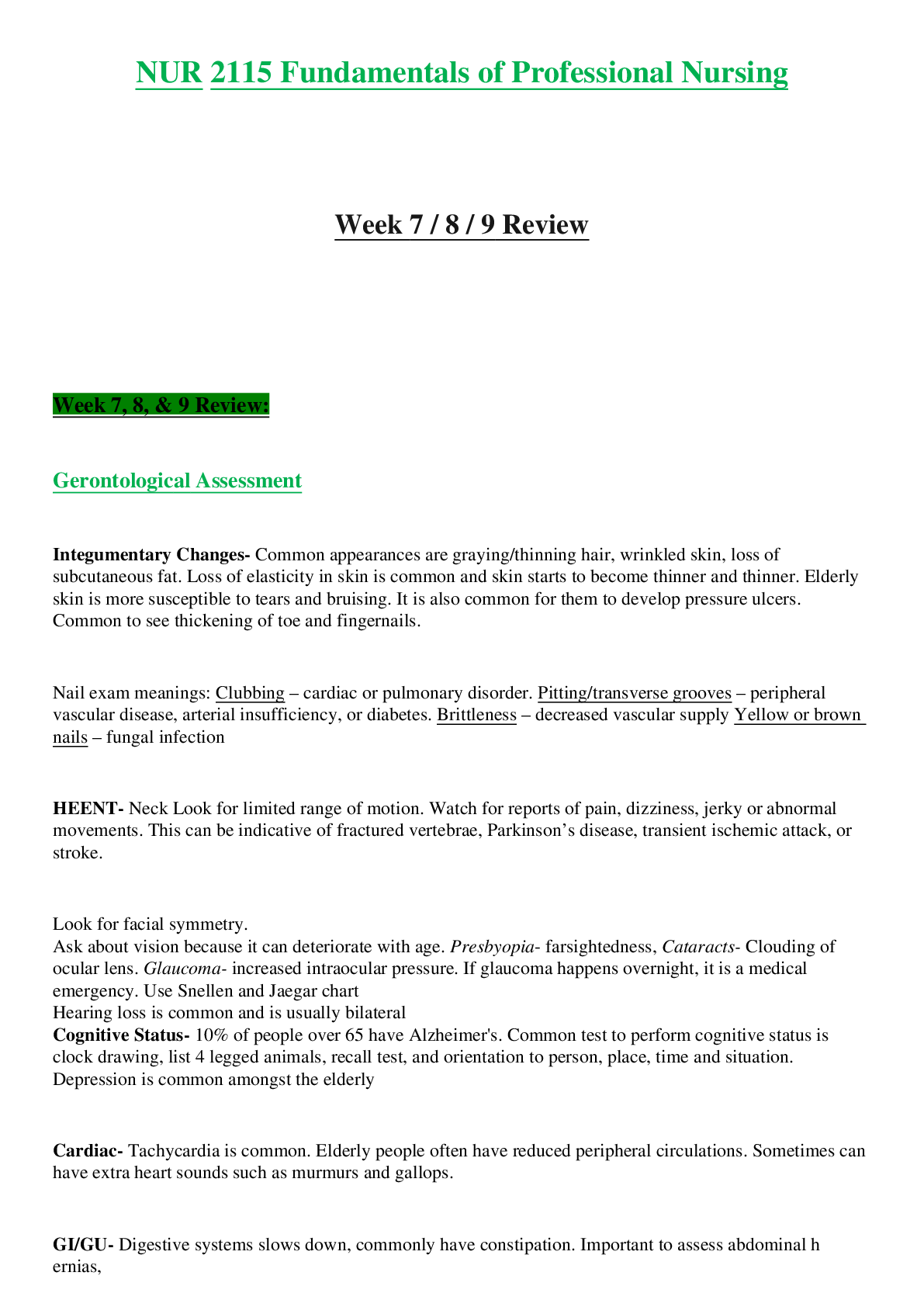*NURSING > STUDY GUIDE > Study Guide for Final Exam,100% CORRECT (All)
Study Guide for Final Exam,100% CORRECT
Document Content and Description Below
1. Know the causes of an abdominal aortic aneurysm. 2. Why is CT imaging limited in women? 3. What is self-management support? . 4. Which Medicare part covers inpatient hospital services? ... 5. Understand risk factors for abdominal aortic aneurysm. 6. Study atrial fibrillation and at what age is it more common. 7. Where could you find supporting data for guidelines for prevention of future heart disease? 8. Can ischemic changes on an ECG during or after an ETT correlate to the effected artery or arteries? 9. What is the goal of self-management? 10. Know the symptoms of an abdominal aortic aneurysm. 11. Know the difference between the principles of fidelity, veracity, self-reflection, and finance. 12. Understand the coronary flow related to CAD. 13. What pathogen accounts for the majority of cases of pyelonephritis? 14. What is a Saccular Abdominal Aneurysm? 15. What diagnostic test is used for CAD? 16. How much should the recommended amount of sodium be for a diagnosis of hypertension? 17.Which collaboration is the most important when caring for your patients? 18. What are the signs of heart failure? 19. What phenomenon most often occurs with tachy-arrhythmias? 20. What are strategies in the movement to improve the healthcare system? 21. Where would you measure the J point located on an ECG in relation to the QRS and ST-segment depression after an exercise stress test? 22. What is the best reason to add a Doppler flow studies during an echocardiogram study? 23. Who is eligible for Medicare? 24. Why would you order an ETT in a symptomatic woman with a normal ECG? 25. Know the types of heart failure. 26. What are the risks for abdominal aortic aneurysm? 27. Does Medicare reimburse nurse practitioners for all services, including those deemed to be exclusive to nursing? 28. Know the prevalence of sexually transmitted diseases in the USA. 29. Understand the different types of stroke and their prevalence. 30. What is the treatment of choice for uncomplicated community-acquired cystitis? 31. What physiological changes occur during effort in the routine ETT? 32. What predictive value does a significant ST-segment elevation have for CAD? 33. How can you determine the cause of a murmur? 34. Understand the different types of stroke and their prevalence. 35. What is an Isometric ST-segment during exercise caused by? 36. Should a patient presenting with symptomatic bradycardia be referred to a cardiologist? 37. What is the most common cause of systolic heart failure? 38. Understand urinary incontinence and possible causes. • Stress incontinence: Loss of urine associated with activities that increase intra-abdominal pressure • Urge incontinence: Involuntary loss of urine usually preceded by a strong, unexpected urge to void • Mixed incontinence: Urge and stress incontinence together • Overflow incontinence: An involuntary loss of urine associated with incomplete emptying 39. What defines a positive exercise echocardiogram? 40. What condition does narrowed coronary arteries or plague rupture cause? 41. What changes would you see during an ETT that are highly predictive of CAD? 42. What property is common to all cardiac cells? 43. What does an abnormal left ventricular ejection fraction on an echocardiogram mean for a patient during an ETT? 44. Where do most arrhythmias occur in the heart? 45. Know the reasons for using the risk stratification according to the Farmingham risk score to justify a ETT in an asymptomatic patient. Your patient has a maximum age-predicted heart rate of 180. During the exercise, he reaches a heart rate of 140 and then states he can no longer exercise. You see no evidence of ischemia on the ECG. This would be diagnostic for what condition? Ischemic changes on ECG during ETT is highly predictive of CAD. What is another important strong predictor of CAD that you might see during an ETT? You are counseling a patient diagnosed with stress-induced ischemia. You base your discussion on your knowledge that stress-induced ischemia is thought to be caused by what phenomena? [Show More]
Last updated: 3 years ago
Preview 1 out of 13 pages
.png)
Buy this document to get the full access instantly
Instant Download Access after purchase
Buy NowInstant download
We Accept:

Reviews( 0 )
$16.00
Can't find what you want? Try our AI powered Search
Document information
Connected school, study & course
About the document
Uploaded On
Sep 11, 2020
Number of pages
13
Written in
All
Additional information
This document has been written for:
Uploaded
Sep 11, 2020
Downloads
0
Views
119

.png)



